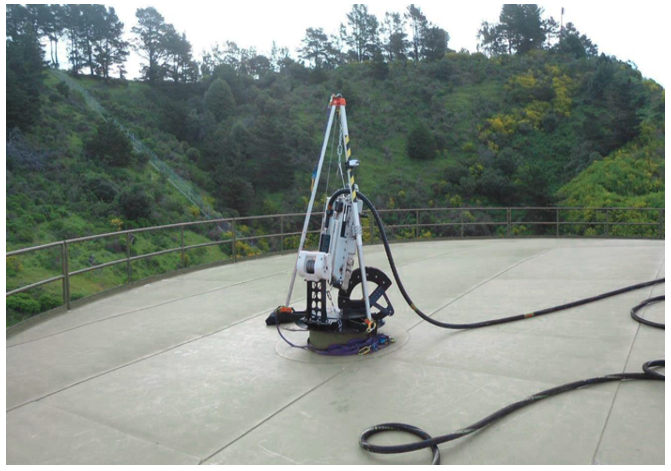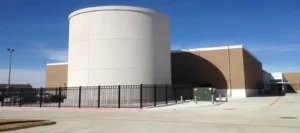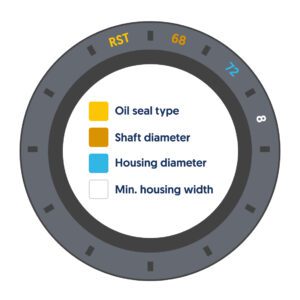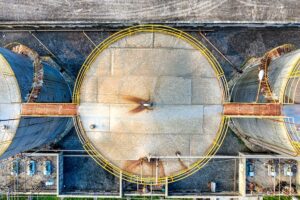One can notice the significant impact of technology on Aboveground Storage Tanks (AST) within the past few years .This technology has revolutionized the way we monitor, maintain, and operate ASTs, improving safety, efficiency, and environmental protection. In this article, I will discuss the latest advancements in technology for ASTs, innovations that have transformed the industry, and recent developments that are shaping the future.

Influence of Technology on AST
The influence of technology on ASTs cannot be overstated. In the past, ASTs were primarily monitored manually, with operators checking the tanks for leaks, corrosion, and other potential hazards. This process was time-consuming, costly, and sometimes dangerous. However, with the advent of digital sensors and monitoring systems, ASTs can now be monitored remotely, in real-time, from any location. This has reduced the need for physical inspections, minimized human error and increased the speed of response to any issues.
Furthermore, technology has improved the accuracy and reliability of AST data, allowing operators to make more informed decisions. The incorporation of artificial intelligence (AI) and machine learning algorithms have made it possible to predict potential failures before they happen, enabling operators to take preventive measures to avoid costly downtime or environmental disasters.
Improvement in materials and construction:
Corrosion-resistant coatings and durable polymers have contributed to increased longevity and safety of ASTs.
Address the implementation of advanced design technologies, such as computer-aided-design (CAD), which have optimized tank shapes and sizes for various applications.
Advancements in detection and monitoring systems:
Explain how modern sensors, such as leak detection systems and real-time monitoring solutions, have greatly enhanced the safety and reliability of ASTs.
Cover how data collected by these sensors can be used for predictive maintenance and proactive measures to avoid potential issues.
Environmental considerations:
Analyze how innovative technologies have helped reduce the environmental impact of ASTs through advanced spill containment systems and emissions reduction measures.
Show how these measures contribute to a cleaner environment while also ensuring compliance with government regulations.
Integration with other industry technologies:
Explore the integration of cloud computing, IoT (Internet of Things), and remote control features with AST management systems.
Describe how these integrated technologies streamline communication and facilitate efficient decision-making processes in storage tank maintenance and operation.
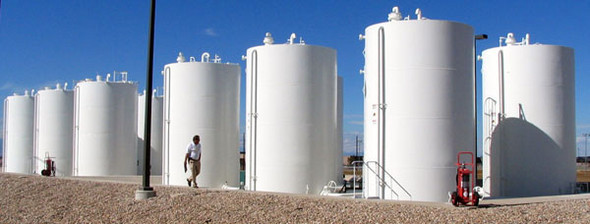
Innovations in AST Technology
One of the most significant innovations in AST technology is the development of self-monitoring systems. These systems use sensors to detect potential hazards such as leaks, overfills, and corrosion, and then alert operators in real-time. This has greatly reduced the risk of environmental contamination and accidents, making ASTs safer for both workers and the environment.
Another innovation is the use of mobile applications to monitor ASTs. These apps allow operators to access real-time data on their smartphones, making it easier to manage multiple tanks from a single location. With the help of GPS, these apps can also track the location of the tanks, making it easier to schedule maintenance and deliveries.
Detection and monitoring systems:
Advanced leak detection systems have been developed to accurately monitor the integrity of ASTs. This technology enables the early identification of potential leaks or failures, allowing for timely maintenance or repairs, and minimizing storage disruption.
see tips to reduce risk of storage tank leakage
Overfill prevention:
Smart overfill prevention systems provide accurate measurements of tank levels, triggering alarms or shutting off inflow when capacity limits are reached. This prevents dangerous overfills and spillage incidents.
Vapor recovery units (VRUs):
Vapor recovery units are designed to capture volatile organic compounds (VOCs) released during the transfer or storage of petroleum or chemical products in ASTs. This vapor recovery innovative technology reduces harmful emissions while providing an additional revenue stream by capturing reusable gas vapors.
Emergency response plans:
Enhanced emergency response plans utilize digital platforms for rapid communication in case of accidents or emergencies involving aboveground storage tanks. Utilizing technology such as mobile applications for incident reporting and real-time monitoring can mitigate risk and enable faster response times.
Remote management: Incorporating IoT (Internet of Things) technologies allows for remote management, tracking, and monitoring of ASTs from a central location, improving operational efficiency and allowing preventive action when needed.
Recent Developments
Recent developments in AST technology have focused on improving sustainability and reducing carbon emissions. For instance, some companies are experimenting with solar-powered ASTs, which use solar panels to power the monitoring systems and pumps. This reduces the need for external power sources and reduces carbon emissions.
Another development is the use of advanced coatings to protect ASTs from corrosion. These coatings are designed to withstand harsh environments, reducing maintenance costs and increasing the lifespan of the tanks. Additionally, these coatings are eco-friendly, reducing the impact on the environment.
Conclusion
In conclusion, technology has had a significant impact on the AST industry, transforming the way we monitor, maintain, and operate these tanks. The innovations discussed in this article have made ASTs safer, more efficient, and more sustainable. As technology continues to advance, we can expect more developments that will further improve the industry. It is essential that companies in the fuel and storage industry embrace these advancements if they want to remain competitive and environmentally responsible.

